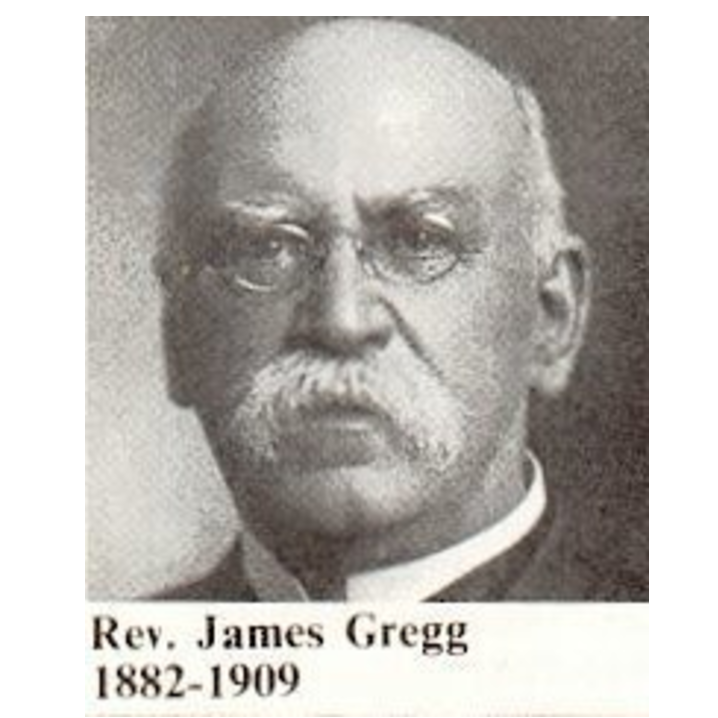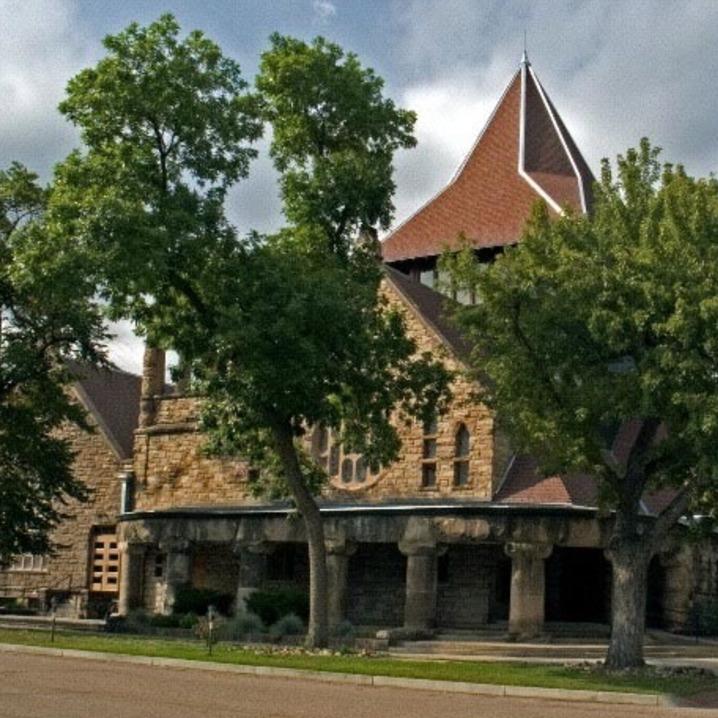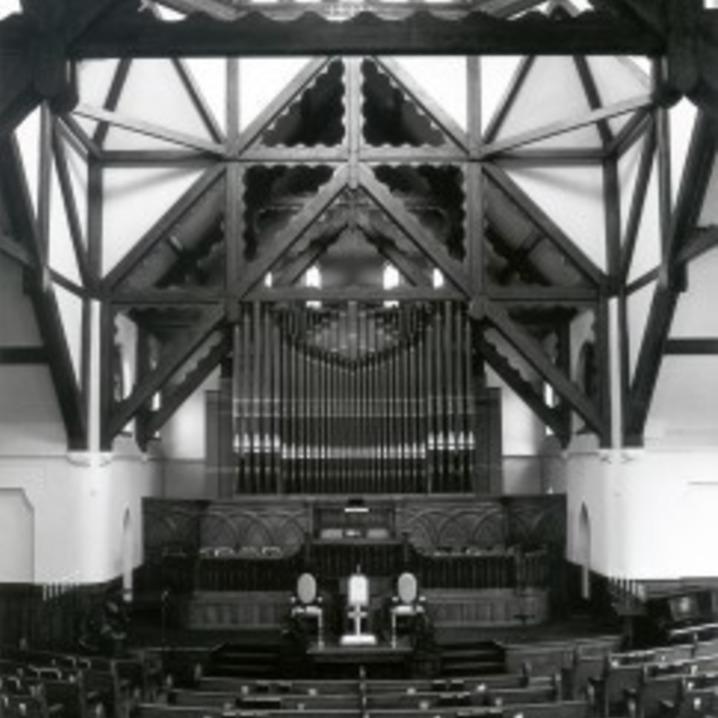Our faith tradition’s history is one of the oldest in the United States. Congregationalism was established in New England in the early 1600’s and merged with the Evangelical and Reformed Church in 1957 to form the United Church of Christ (UCC). Vital in the development of our nation, Congregationalists founded many educational institutions, including Harvard in 1636 and Yale in 1701. In 1874, three years after the founding of Colorado Springs, Congregationalists founded The Colorado College and our First Congregational Church.

The importance of books and a library has always been a significant part of First Congregational Church’s history. When the present Sanctuary was built in 1888-89, a library was included, shelved on one wall of the Sacristy. The library found a new home 46 years later in a small frame house sitting on the church’s west side.
That house was bought and donated to the church in memory of Rev. James B. Gregg, who served as pastor for 27 years. It was named the Gregg Memorial Library Building. The building housed a study and classrooms. In addition, Dr. Gregg’s children gave a $10,000 bequest dedicated to the library. That bequest still funds the library’s budget today. The Gregg Library is located in the West Building attached to the church.

The First Congregational Church of Colorado Springs was organized and founded in 1874 in conjunction with the founding of Colorado College. The first two ministers of the church, Rev. Jonathan Edwards and Rev. James Dougherty, also held positions with the college.
The present building on the corner of St. Vrain and N. Tejon was completed in 1889 at an estimated cost of $40,000. Its design is in the Richardsonian Romanesque style and is constructed of Colorado Wall Mountain Tuft (rhyolite) quarried near Castle Rock, Colorado. The architect was Henry Rutgers Marshall of New York, an acclaimed student of Henry Hobson Richardson, and there is only one other church known to have been designed by him: Arlington Avenue Presbyterian Church in Brooklyn, NY (1905, Arlington Avenue Presbyterian Church – Brooklyn, NY ). The first service in the current building was James Gregg held on 21 July 1889 and the new building soon became a landmark in Colorado Springs.
An early article in the then Weekly Gazette newspaper commented that “the design of the building is unique and has attracted much attention and admiration.”
“Surely few churches there are with so many pillars. The many pillars in our portico seem suggestive of the spiritual life of the church within, its strength, its dignity, its peace.”
– Dr. James Gregg, October 1914
 The cornerstone for our present church was laid on September 8, 1888, and the first services were held in the new building on July 21, 1889. Dedication was delayed until October, however, when the pipe organ crafted by Hook and Hastings of Boston was installed. Our faith community has been housed in this structure ever since, making our facility the oldest church building in Colorado Springs continuously used by the same congregation.
The cornerstone for our present church was laid on September 8, 1888, and the first services were held in the new building on July 21, 1889. Dedication was delayed until October, however, when the pipe organ crafted by Hook and Hastings of Boston was installed. Our faith community has been housed in this structure ever since, making our facility the oldest church building in Colorado Springs continuously used by the same congregation.
First Congregational Church was placed on the National Register of Historic Places on October 31, 2002. In partnership with the Colorado Historical Society’s State Historical Fund, our church and Founders’ Room addition (1903) have undergone restoration to their 1910 appearance.
The interior of the church is in the plan of a Greek cross with an octagonal dome rising above the north. The lower walls of the Sanctuary are paneled in light oak to match the pews with notable stained glass throughout. The original organ was designed by Hook and Hastings of Boston and is the oldest organ in continuous use in Colorado Springs.
Additions to the present building include the Founders' Room in 1903, the Christian Education Building in 1959 and the Atrium in 1996. Alterations and improvements were made to the main building in 1910 and extensive restoration work to the interior of the building was completed in 2011.
The Organ at First Congregational Church United Church of Christ was built by the famous Boston builder Hook and Hastings in 1888 and installed in the newly constructed church building in 1889. It is the oldest original working pipe organ in Colorado Springs and the facade is the largest original Hook and Hastings facade west of the Mississippi.
It is believed that the organ was shipped by barge from Boston to the Gulf of Mexico and up the Mississippi River to St. Louis. Upon arrival in St. Louis it was then transported west to Colorado Springs by railroad and delivered to the church by freight wagon. The freight information is still readable on the wood cartons which were used (a practice of the time) to build the enclosure for the Swell division. As most nineteenth century pipe organs in the area, the original organ was powered by water. In this case a rare water turbine system that is still intact in the building. However, churches were forced to electrify the blowers when during a drought in Colorado, the city shut off all water for this use.
The original organ had 36 registers but it was expanded and altered in rebuilds in 1950 and 1972. Today, the organ has 50 ranks and 38 stops with three manuals and pedal. The instrument was updated in 2012 with removal of the mechanical action and the addition of a new, movable console. The action has been electrified and is controlled by a Petersen ICS system. MIDI capability has been added with a Rodgers/Roland sound module. All pipework was cleaned, repaired and revoiced. Some historic Hook and Hastings ranks from opus 1466 were added to the instrument to return some of the lost sounds.
The organ is now ready to serve for another 125 years. The present specification of the organ of Hook & Hastings, Op. 1432 (1889)
First Congregational Church and generous individuals have donated memorabilia and numerous titles that are archived and maintained by the Special Collections department housed in the Tutt Library, Colorado College.
